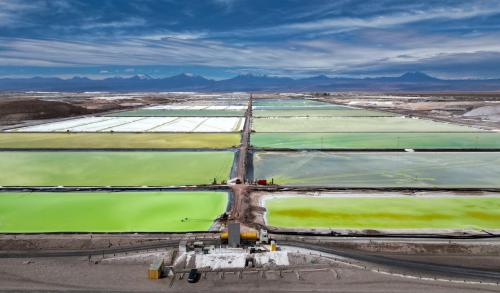Tuesday, the Supreme Court handed down its decision in EPA v. EME Homer City Generation. By a 6-2 margin (with Justice Alito recused), the Court overturned the D.C. Circuit’s August 2012 decision that ruled EPA’s Cross-State Air Pollution Rule (AKA, the Transport Rule) invalid under the Clean Air Act. Writing for the majority (which included the Court’s four liberal justices as well as the Chief Justice and Justice Kennedy), Justice Ruth Bader Ginsburg found that the EPA had the flexibility under the Clean Air Act to use market mechanisms to combat transmission of conventional pollutants across state lines. According to the majority, the statute’s silences speak loudly in granting EPA flexibility to design what it believes is an efficient enforcement mechanism, and considering compliance costs in doing so is permissible (and indeed natural) even without any explicit statutory permission to do so (26-27).
For those interested in the case’s details, there are plenty of good summaries around. Here at FixGov, I just want to note a few critical aspects of the case that have not gotten much attention.
First, the decision augurs well for EPA in its other Clean Air Act case currently before the Court, Utility Air Regulatory Group (UARG) v. EPA, which I previously examined on FixGov. In yesterday’s opinion, Justice Ginsburg relied heavily on Chevron, the seminal opinion granting discretion to agencies which itself stemmed from issues arising under the Clean Air Act. Citing a “notable resemblance” to Chevron (20), she emphasized the complexity of the statute’s regulatory imperative and the need to allow the agency to determine how best to achieve its goals, making it clear that only a statutory provision very explicitly proscribing the EPA’s approach would have prevented it. Although EPA does run into a very explicit statutory provision in the UARG case—in the form of precisely specified numbers which admit little room for interpretation—if the Court is inclined to expand the limits of Chevron deference, that is a good sign for the agency as it tries to make sense of another complicated section of the Clean Air Act. We will soon see whether the Justices see the two cases as being governed by the same principle.
Second, the decision is a major victory for those who would like to see bureaucratic experts given the latitude to muddle their way through to more-or-less efficient regulations. At first blush, this might seem to favor Democrats’ position on regulation at the expense of Republicans’, but the history in the case shows it’s more complicated than that. Before the Transport rule, there was the Clean Air Interstate rule, which the EPA promulgated under President Bush in 2005. Seeking to learn from the success of the market-based Title IV of the Clean Air Act, which successfully combated acid rain, the Bush administration devised a market-based mechanism for regulating conventional air pollutants, seeing this as a major step forward from command-and-control regulation in terms of efficiency. The D.C. Circuit found this maneuver rather too creative given the statute’s text, and struck it down in 2008 (in North Carolina v. EPA). It’s not certain, but the Supreme Court’s logic offered today might well have upheld the Bush administration’s preferred approach. Indeed, most fair-minded observers have realized that the Obama EPA’s Transport rule flows directly out of the Bush administration’s earlier efforts to devise an acceptable market mechanism.
Finally, rather than pro- or anti-regulatory forces, the real divide in the case is about the role that Congress must play in supervising the evolution of regulatory frameworks. As with many bureaucratic innovations, when we look to see why the Bush administration sought to reinterpret the Clean Air Act we find congressional inaction. Specifically, we find one of the signature legislative proposals of Bush’s first term, the Clear Skies Act of 2003, which stalled in Congress despite Republican control of both chambers.Unfairly branded as a gift to industry, the proposed law would have actually provided a statutory framework on which to build a market-based cap-and-trade system for conventional pollutants. It was indeed less stringent than many environmentalists preferred, but it nevertheless would have helped modernize our air pollution law.
We can now see that after a decade of subsequent congressional inaction and bureaucratic experimentation, our judiciary has decided to allow a jerry-rigged use of the existing statute to proceed. As I argue in my law review article, “When Can You Teach an Old Law New Tricks?”, courts are likely sensitive to signs that Congress has ceded the initiative in a policy area. A solid Supreme Court majority is willing to put aside any concerns about democratic legitimacy—strenuously emphasized by Justice Scalia in his dissent—in favor of a pragmatic acceptance of muddling through. From the perspective of getting government to work, that seems somewhat heartening; from the perspective of protecting the rule of law and the centrality of legislative deliberation in policymaking, it is quite worrying. In any case, Congress should get the message loud and clear: if you don’t use your Constitutional prerogative to legislate, you may well lose it.



Commentary
The Supreme Court Rules on Air Pollution: A Victory for Bureaucratic Muddling Through
May 1, 2014